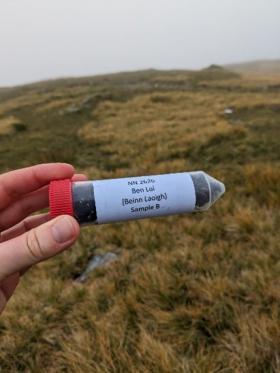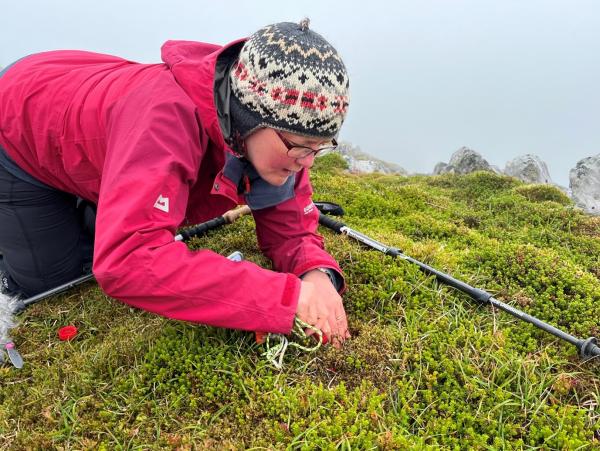Munro soils: citizen science with altitude

By Andrea Britton
Just over a month ago, we launched our citizen science alpine soil biodiversity project “Mountain Heights, Hidden Depths”. Our goal is to collect soil samples from nearly all of Scotland’s Munros so we can create a baseline map of alpine soil biodiversity across Scotland using DNA markers in the soil.
We’ve had an amazing response from the hillwalking community. A total of 410 people registered as volunteers and all the Munros were adopted within 10 days!
It’s great to see how many people are interested in helping us to explore soil biodiversity in our fantastic alpine habitats.
Now that the summer holiday season has arrived, many of our volunteers are starting to sample their Munros, including Bruce Russell, who took the great photo you can see above, showing him sampling on Beinn a' Chaorainn, high up in the hills above Laggan in Lochaber.
Although there is a good bit of legwork involved in getting to the sampling locations, sampling soil DNA for a study like this is relatively straight forward and only a small amount is needed – 50 ml for this study. Volunteers collect samples from three pre-defined locations on their Munro, aiming to sample a moss heath, a grassland and a dwarf-shrub heath area on each mountain. At each location they choose a 1m square of vegetation and collect soil from three or four points within it.
Knowing what counts as “soil” underneath mossy vegetation can be tricky – and it might take a bit of rooting about to find it – as you can see me doing in the photo right at the end of this blog. A video on how to collect a sample on the project website shows volunteers how sampling should be done and what/what not to include in the samples before they head out.
The key things to remember are to make sure that you are sampling the soil and not just the decomposing vegetation, avoid putting large stones and plant material into the sample tube and fill the tube to the top. The photos below show where we want the volunteers to collect their samples from, and how a completed sample should look (thank you to volunteer Kirsten O’Sullivan for that one).


Although the sampling areas are tiny compared to the areas of these habitats on the hill, it’s important to leave no trace of our activities. Vegetation can usually be pushed aside to access the soil between the plants and, after samples have been collected, firming the plants back down into contact with the soil will ensure that they can carry on growing.
So far, we have received samples from 50 Munros, with more arriving every day. The lab team are working hard to process the samples as they arrive – initially we remove stones and plant material and then store them at -20°C.
Once we have a batch of samples, we grind them in liquid nitrogen. Part of the sample is then used to measure the carbon content and acidity of the soil, while the other part is used for DNA analysis.
If you registered as a volunteer at the start of the project but weren’t able to adopt a Munro, there may still be opportunities to participate. If Munros become available for re-adoption for any reason, we will send an email around all registered volunteers to let you know.
For those who have adopted a Munro, good luck with your sampling. Enjoy the hills and remember to be safe.

Andrea Britton taking a sample on Schiehallion.






Comments
Post new comment